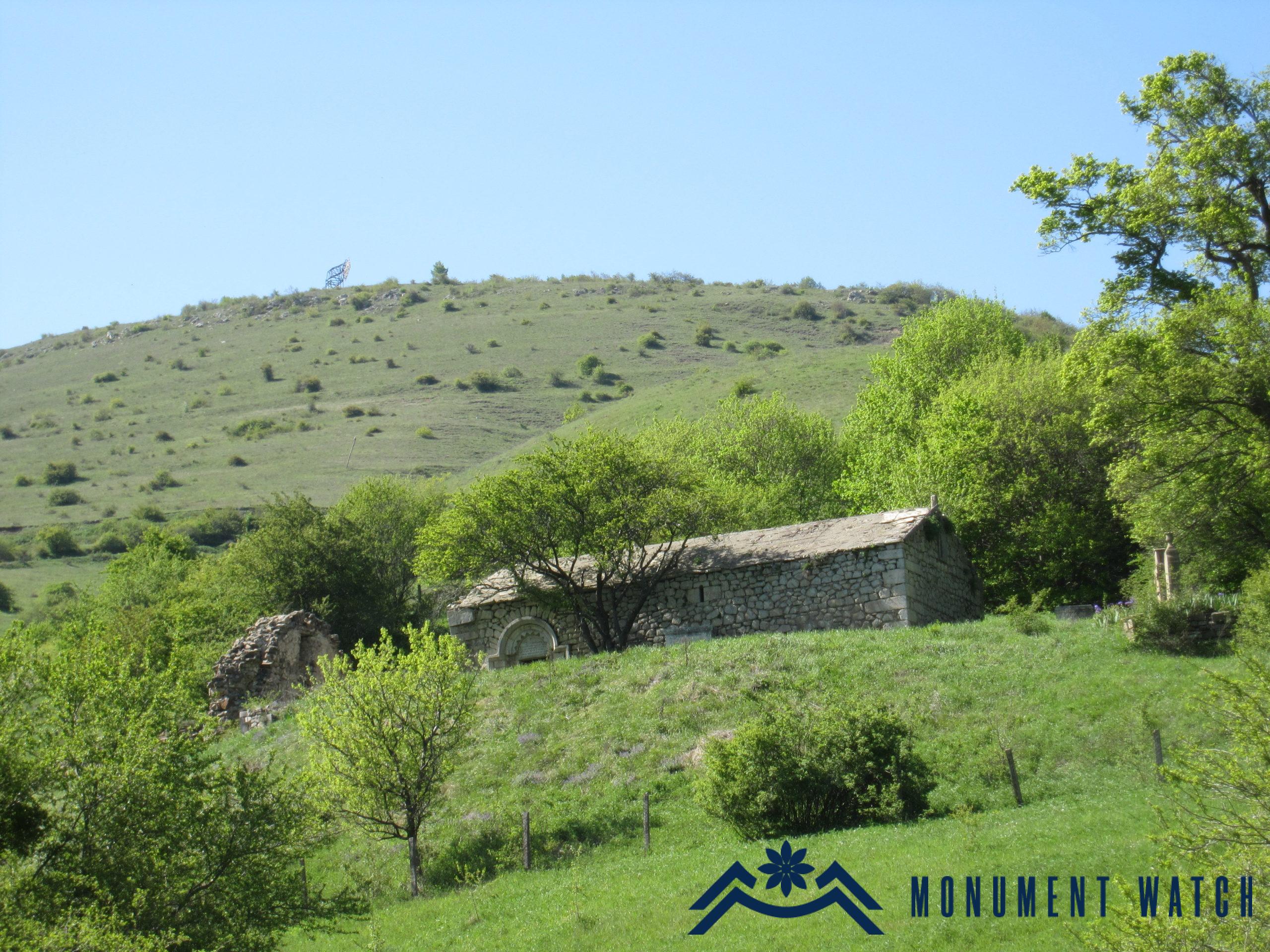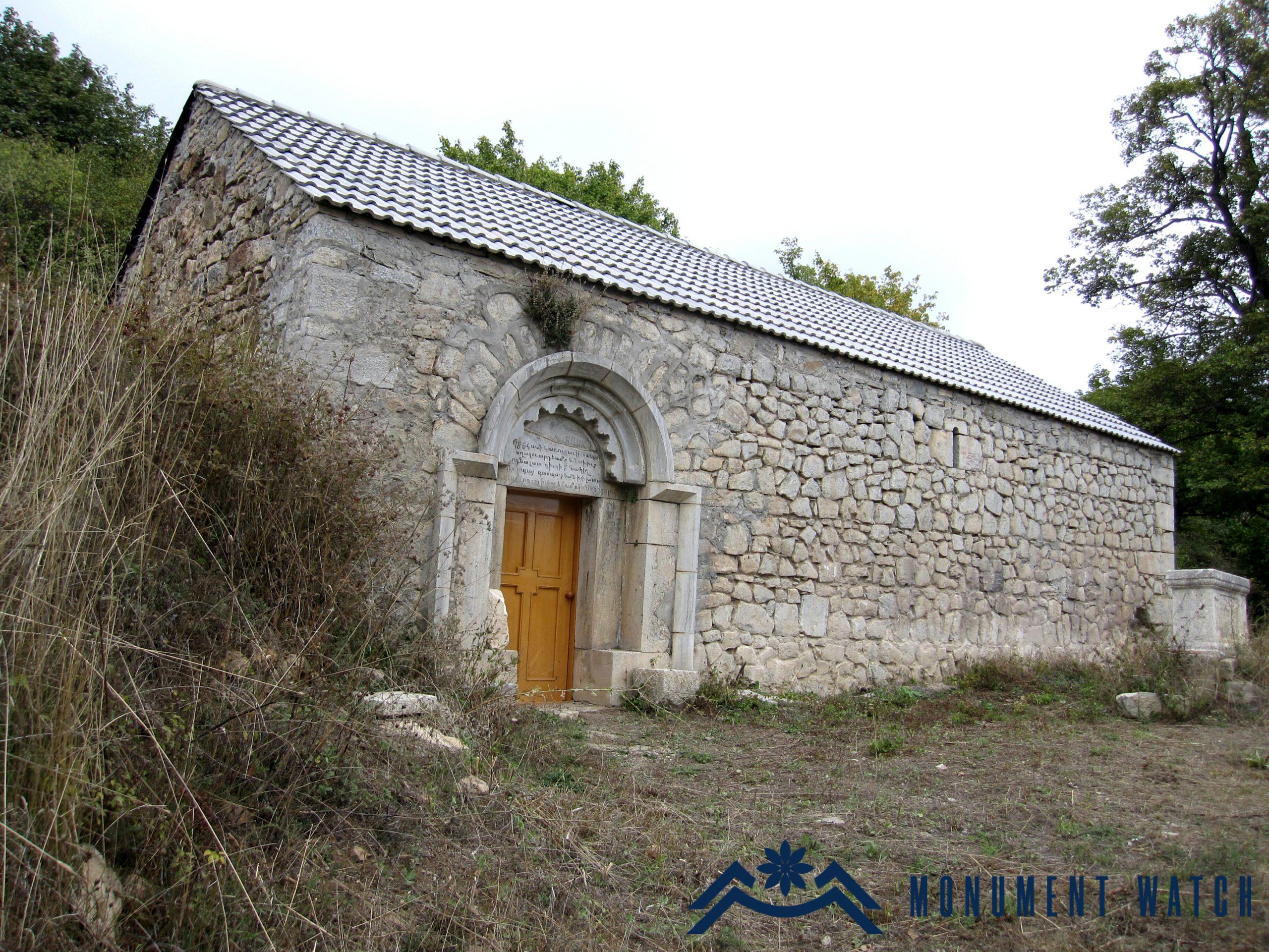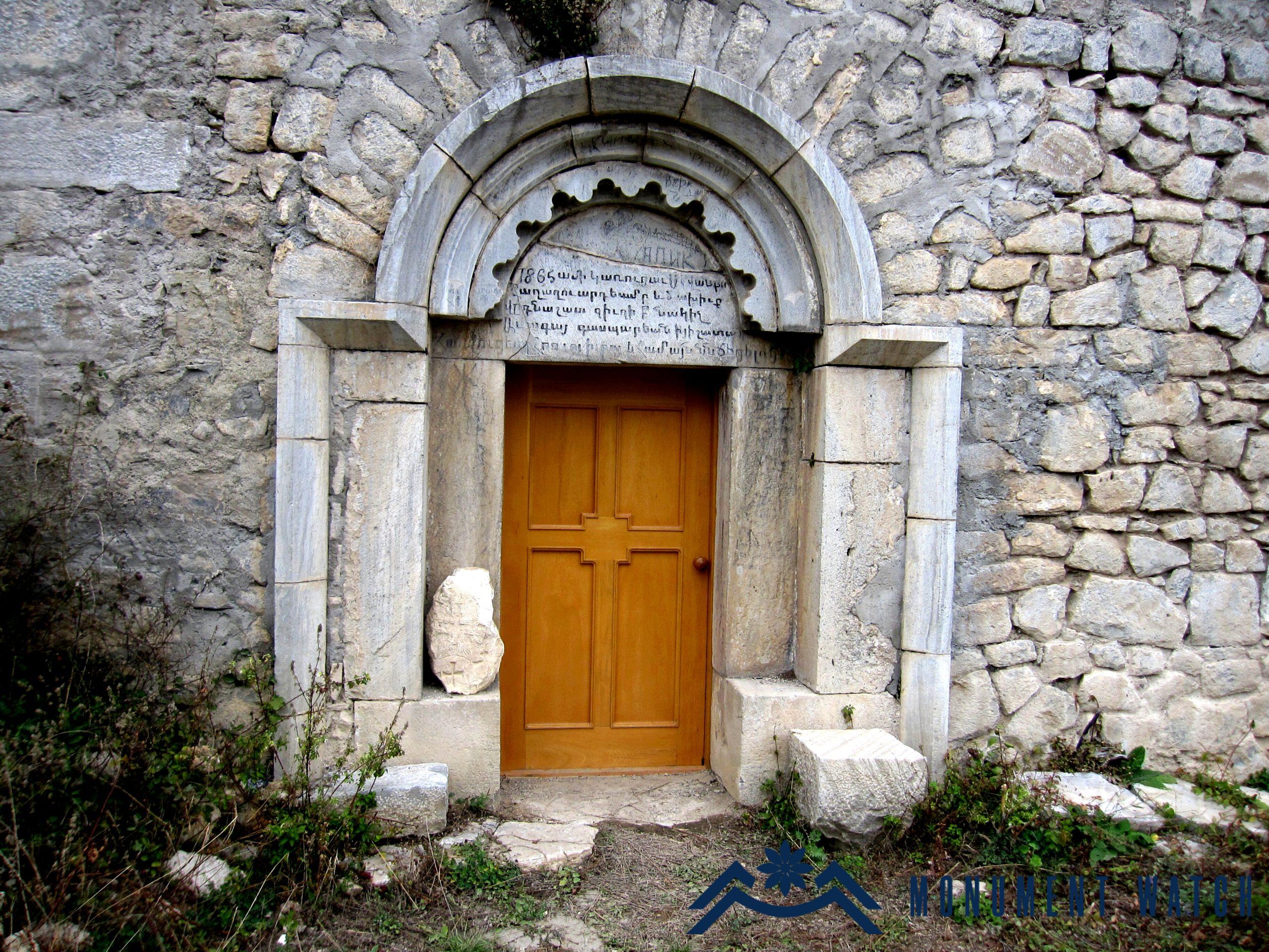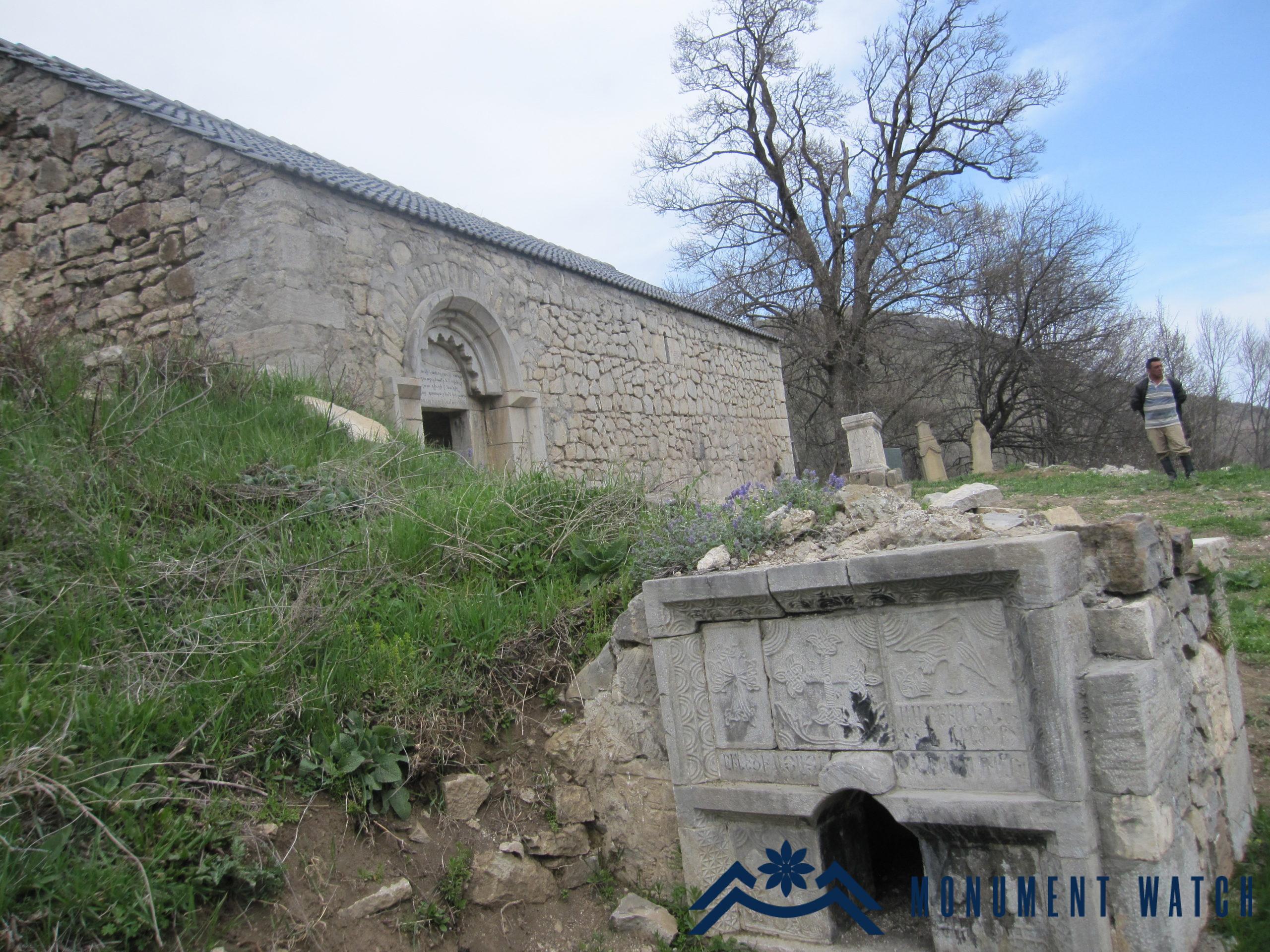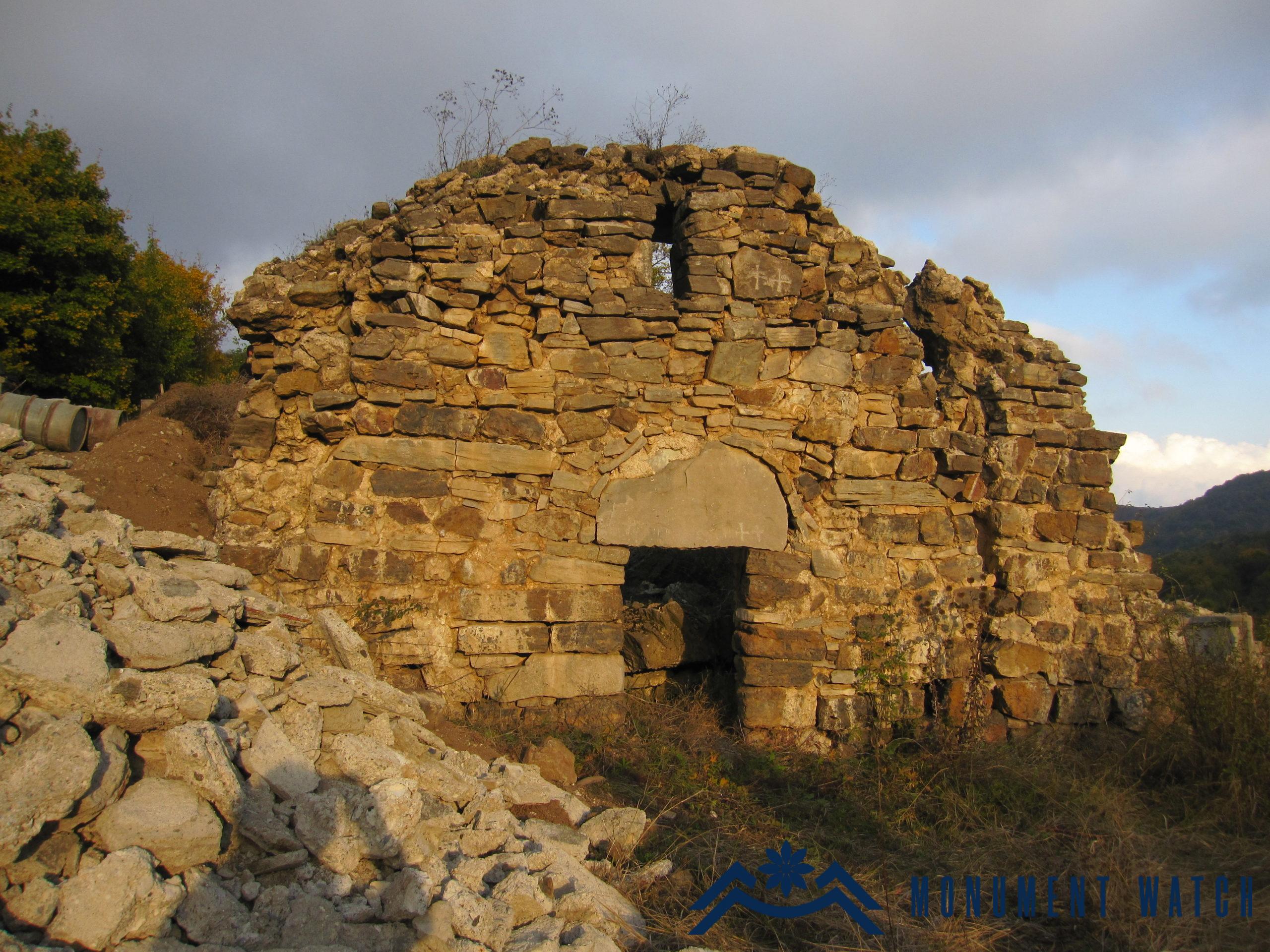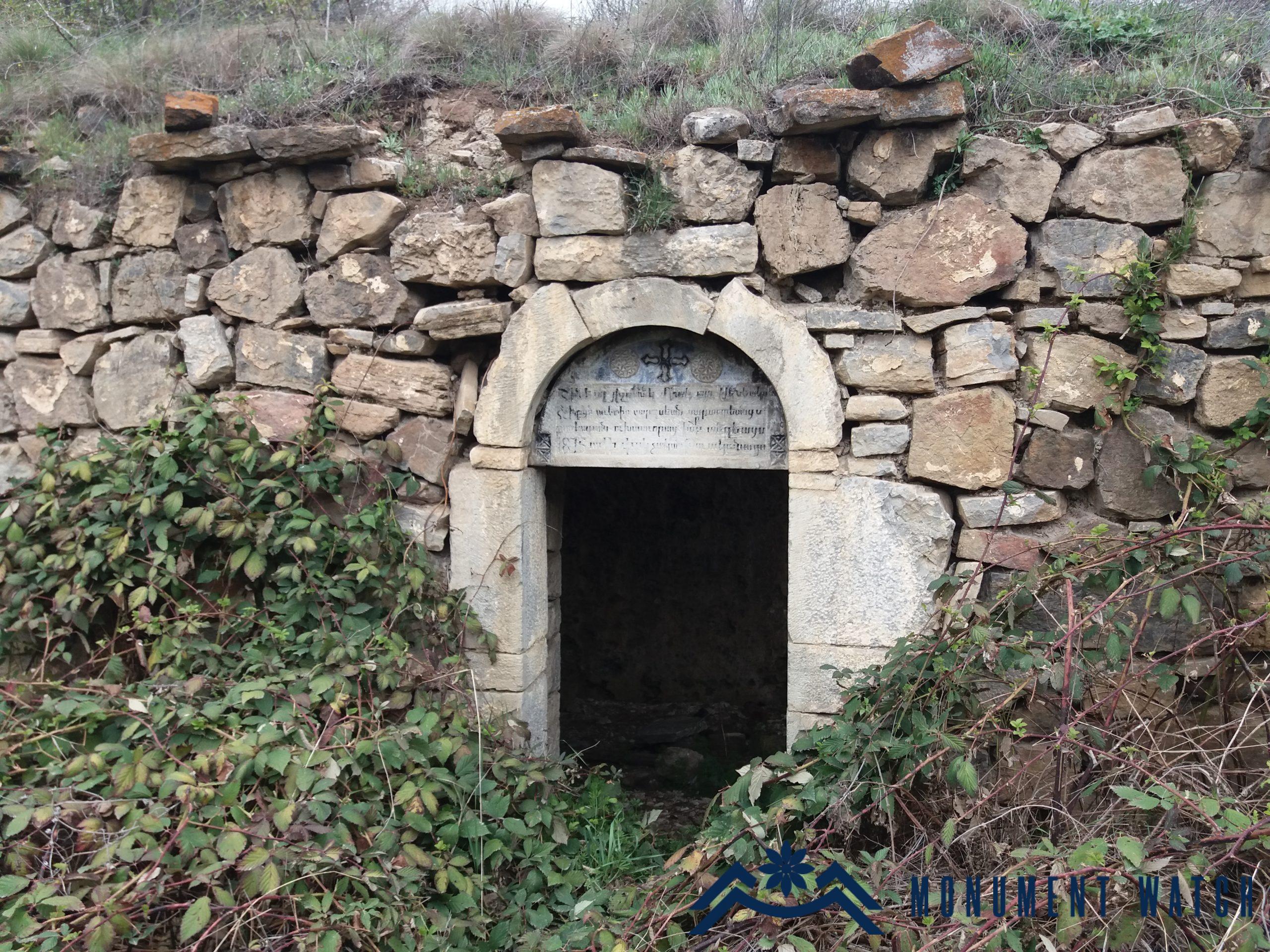The Shakhkakh monastery
Location
The Shakhkakh Monastery is located in the Khndzorut area, in the southern part of Sarinshen village in the Hadrut region (Figs. 1, 2). Azerbaijan holds the village under its occupation.

Historical overview
It was constructed in 1865, as indicated by the inscription that has been preserved on the current church's lintel. "In 1865, the monastery of Surb Shakhkakh was constructed in honor of all the deceased with the financial help of Avag Gasparean from Vrdnashat village" (Fig. 3).
It should be noted that earlier sources also refer to the sanctuary. For instance, the scribe identifies the location of the manuscript's creation in the 1584 gospel copy of Abraham Abegha’s colophon produced at John the Elder priest’s request: "The cloister was constructed in the Hatrut village of Dizak during a difficult and bitter period, with St. Mary's blessing, under the patriarchy of Davit Catholicos and Hovhannes Bishop, during the reign of Khotaypand, in the year of 1584" (Keshishyan 1964, 38, Minasyan 2015, 44-45). Abraham Abegha's colophon also attests to the existence of a scriptorium at the monastery.
Architectural-compositional examination
A church, a chapel, and a room for pilgrims make up the monastic complex (Fig. 4). The church is a rectangular, vaulted hall with a semicircular tabernacle on the east side. The bema has been kept intact. Two tiny windows on the south and east walls provide light to the only entrance, which is on the south side. The monument's arches, entrance, and window sills are polished, and it is constructed of local polished and rough stone as well as lime mortar.
The monastery was covered with a tin roof by Avetis Harutyunyants in 1886, according to an inscription on the church's eastern wall.
The church's western side and the area around it still contain the ruins of an older structure. The building's western wall and entrance are still standing (Fig. 5).
There is a pilgrims' accommodation on the monastery's grounds that is 6.1 meters long and 3.6 meters wide, with a southern entrance. It was constructed in 1875 by Avetis Sargsian Sartariants from Shushi, according to the inscription on the lintel: “This memorial room was created by Shushi resident Avetis Sargsian Sartariants in 1875 as lodging for pilgrims visiting holy sites” (Fig. 6). The monastery is surrounded by both an old and a new cemetery.
The condition before, during, and after the war
In 2014, the church underwent a thorough renovation. No information is available regarding the current state.
Bibliography
- Voskean 1953 - Voskean H., Artsakh monasteries, Vienna.
- Mkrtchyan 1985- Mkrtchyan Sh., Historical and architectural monuments of Nagorno Karabakh, Yerevan.
- Keshishyan 1964 - Keshishyan M., List of Armenian manuscripts in the library of Zmmar monastery, Vienna.
- Minasyan 2015 – Minasyan T., Scriptoria of Artsakh, Yerevan.
The Shakhkakh monastery
Artsakh
